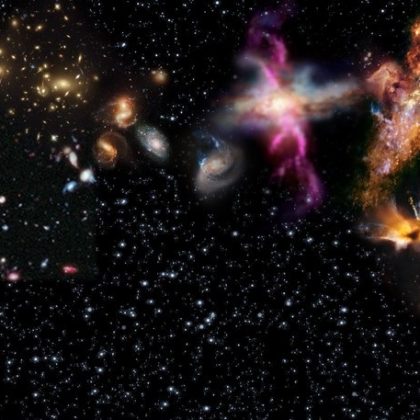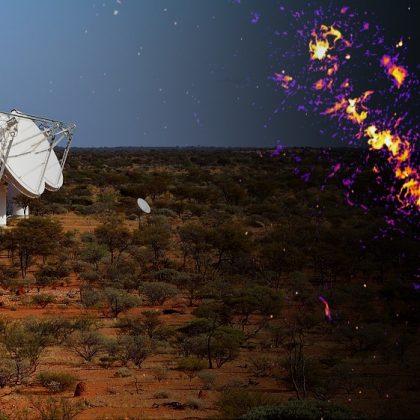The Taipan Galaxy Survey — Mapping the Local Universe
Taipan is a new survey of galaxies starting in late 2017 that will be carried out on the 1.2-metre UK Schmidt Telescope at the Siding Spring Observatory. It is the most ambitious spectroscopic survey of the southern sky to date, continuing a long tradition of extensive spectroscopic surveys carried out in Australia.

Taipan will use a brand-new instrument, TAIPAN, which consists of a state-of-the-art multi-object spectroscopic fibre positioner and a purpose-built spectrograph. The fibre positioner uses the
innovative ‘Starbugs’ positioning system developed at the Australian Astronomical Observatory, which rapidly and simultaneously deploys 150 fibres over the telescope’s focal plane. Each fibre
acquires light from one target galaxy, and sends it through to the spectrograph which then splits the light into its different wavelengths across the visible region of the electromagnetic spectrum. These detailed galaxy spectra are used to measure key physical properties such as their distances, motions, chemical properties, and the rate at which they are forming new stars. The Starbugs technology enables faster-than-ever survey speeds, which will allow Taipan to deliver new galaxy spectra for about two million galaxies over the southern sky in record time (under five years).
Using Taipan we will build the largest and most detailed three-dimensional map of the matter distribution in the local Universe (the so-called ‘cosmic web’) ever achieved. Essentially, Taipan will
use galaxies as ‘test particles’, following the motions imposed by the dark, mysterious components of the Universe that we cannot observe directly: dark energy, which drives the expansion of the
Universe on the largest cosmological scales, and dark matter, which drives gravitational attraction on the smaller scales of clusters and superclusters of galaxies.
We have known for almost a century that the Universe is expanding; in the late 1990s, it was discovered that this expansion is currently accelerating due to dark energy. The expansion rate (the
Hubble constant) is a fundamental parameter of the current standard model for cosmology. Using Taipan data, we will measure the Hubble constant to an unprecedented precision of 1% thanks to
our detailed map of the matter distribution, using a method known as baryonic acoustic oscillations. This precise measurement will allow us to test the cosmological model and will lead to a better
understanding of dark energy.
Along with measuring the large-scale spatial distribution of galaxies, we will also measure their motions relative to the Hubble expansion flow, to detect galaxies ‘falling’ into large dark matter
concentrations, namely clusters and superclusters of galaxies. The rate at which these structures are growing depends strongly on how exactly gravity works on the largest scales and will be used to
test Einstein’s theory of General Relativity.
However, Taipan will not just use galaxies as test particles to trace the dark components of the Universe, it will also enable studies of the processes shaping galaxies themselves. Taipan will
conduct a census of galaxy properties in the local Universe that will help shed light on how normal matter evolved from the early Universe to form the variety of galaxies we observe today.
Read the article from PASA – Publications of the Astronomical Society of Australia





